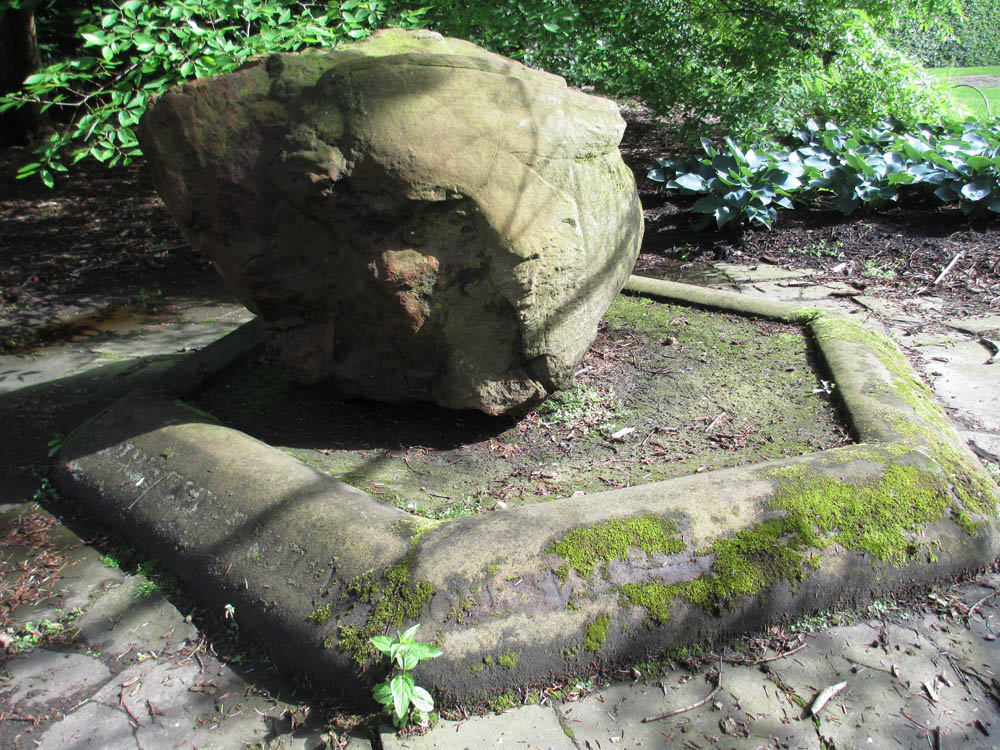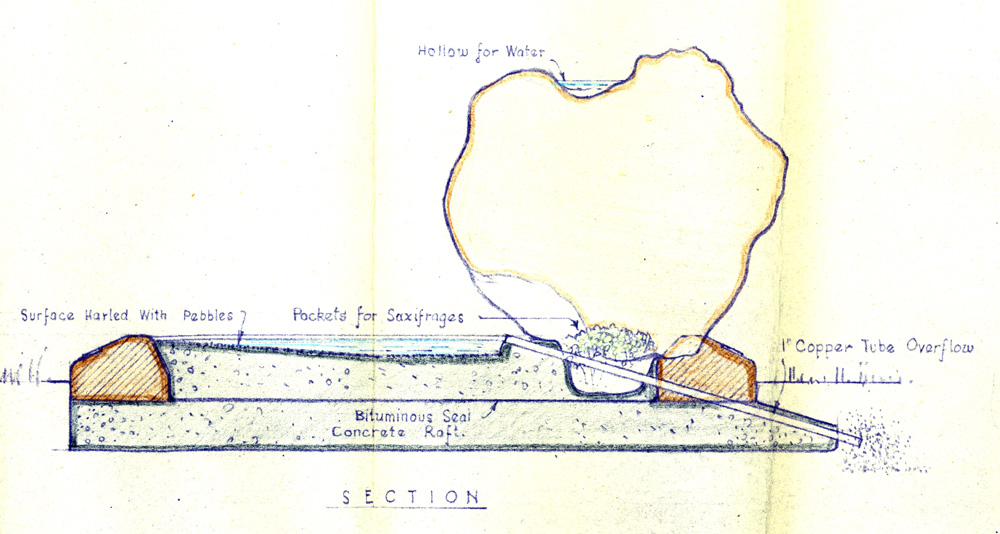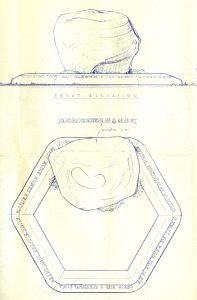Have you ever wondered what the stone situated to the west of the beech hedge at RBGE is? Have you even noticed it’s there?
The lump of red stone is actually a memorial with a small trough shaped into its upper surface to act as a bird bath sitting on a hexagonal plinth. Around the edges can be seen the faint vestiges of an inscription – it’s all very mysterious!
Filed away in the RBGE Archives is a folder of papers and drawings (GB 235 REG/SD/52/4) which detail the origin of this memorial:
It was designed by the architect Sir Frank Mears (1880-1953), husband of Norah Geddes (1887-1967), Sir Patrick Geddes’s daughter. Before they married they collaborated on the design of Edinburgh Zoo, which opened in 1913. Sir Frank advised on many Scottish urban renewal schemes, most notably the old town in Stirling.
The bird bath was sculpted by Charles d’Orville Pilkington Jackson (1887-1973) whose most well-known work is the statue of Robert the Bruce at the Bannockburn Heritage Centre. The rough stone it’s carved from is actually a piece of fossil tree dug from Craigleith Quarry, Edinburgh, the same site as the one which produced RBGE’s fossil tree, on display near the Palm House.
The inscription on the plinth, now almost gone is drawn on the memorial’s plan in the Archives folder and reveals who the memorial was designed and sculpted for. It reads: ‘In remembrance of Mary, Alice, Agnes & Edith, four sisters who loved this garden and the birds in it for over 50 years, given by Australian cousins in 1945.’
The four sisters commemorated were the daughters of Robert Gray (1825-1887), banker in Glasgow and Edinburgh. Mr Gray was a keen amateur ornithologist, whose major work in this subject ‘Birds of the West of Scotland’ was illustrated with reproductions of his own paintings. His wife, Elizabeth Anderson (1831-1924) and daughters were keen geologists, and their main collection of fossil plants is in the Natural History Museum, London. Earlier collections are housed in the Hunterian Museum, University of Glasgow, and the National Museum of Scotland.
Edith H. M. Gray, the last surviving daughter, died in October 1944.
The bird bath was installed at RBGE in October 1946.




Robert Cubey
Graham,
I had always wondered what that stone was – never thought it was a fossil tree carved into a bird bath.
Thanks Rob
Pam Solursh
Graham,
Elizabeth Anderson Grey was the sister of my great grandfather Dr. William Anderson who emigrated to Newfoundland, Canada shortly after he graduated from Glasgow University in 1864.